Perfectly Blanched Broccoli A Simple Guide to a Delicious
Blanched broccoli transforms the ordinary into the extraordinary in just minutes, offering a vibrant, crunchy addition to any meal. Blanching, a culinary technique that involves briefly boiling vegetables and then plunging them into ice water, is celebrated for its ability to enhance both flavor and texture. This method is particularly effective with broccoli, turning its sometimes bitter and tough profile into a delightfully tender, yet crisp experience. The quick cooking time preserves the bright green color and natural nutrients, making it a healthier choice compared to longer cooking methods that can deplete beneficial qualities.
The magic of blanched broccoli lies not just in its improved taste and aesthetic appeal but also in its versatility. Whether served as a standalone side sprinkled with a bit of salt and red pepper flakes or incorporated into a more complex dish like a stir-fry or salad, blanched broccoli adapts effortlessly. Its readiness to meld with a variety of flavors—from tangy dressings to savory sauces—makes it a go-to vegetable in my kitchen.
I’ve made blanched broccoli a weekly staple at home, finding it to be an indispensable ally in my quest to provide nutritious, delicious, and quick dinners for my family. Whether it’s accompanying a piece of grilled fish or tossed into a pasta dish, it consistently adds a pop of color and nutrition. Each week, as I drop the florets into the boiling water, I am reminded of its simplicity and the pure joy such a simple process can bring to the table. This method has not only made broccoli more palatable but has also converted many self-proclaimed broccoli skeptics into enthusiasts at my dinner table.
| Aspect | Details |
|---|---|
| Technique | Blanching involves briefly boiling vegetables and then plunging them into ice water. |
| Benefits | Enhances flavor and texture, preserves color and nutrients, makes broccoli tender yet crisp. |
| Versatility | Can be served as a side, or incorporated into dishes like stir-fries and salads. |
| Personal Impact | Transformed broccoli into a weekly staple, improving family dinners and converting skeptics. |
Contents
Why I Love This Recipe
Blanched broccoli is not just a side dish; it’s a testament to how simple ingredients can be transformed into something spectacular with minimal effort. Here’s why this recipe is a favorite in my kitchen:
Quick and Easy Preparation: Time is often of the essence in the kitchen, especially on busy weeknights. This blanched broccoli recipe takes just 10 minutes from start to finish. The actual cooking time is brief, ensuring that even the most time-pressed cook can whip up a nutritious side dish without any hassle.
Versatile Use in Various Dishes: One of the greatest strengths of blanched broccoli is its versatility. It seamlessly integrates into a myriad of dishes. Whether it’s adding a nutritious boost to a morning omelet, serving as a crunchy component in a stir-fry, or being a hearty addition to slow-cooked meals in a crockpot, blanched broccoli maintains its integrity and enhances the overall dish.
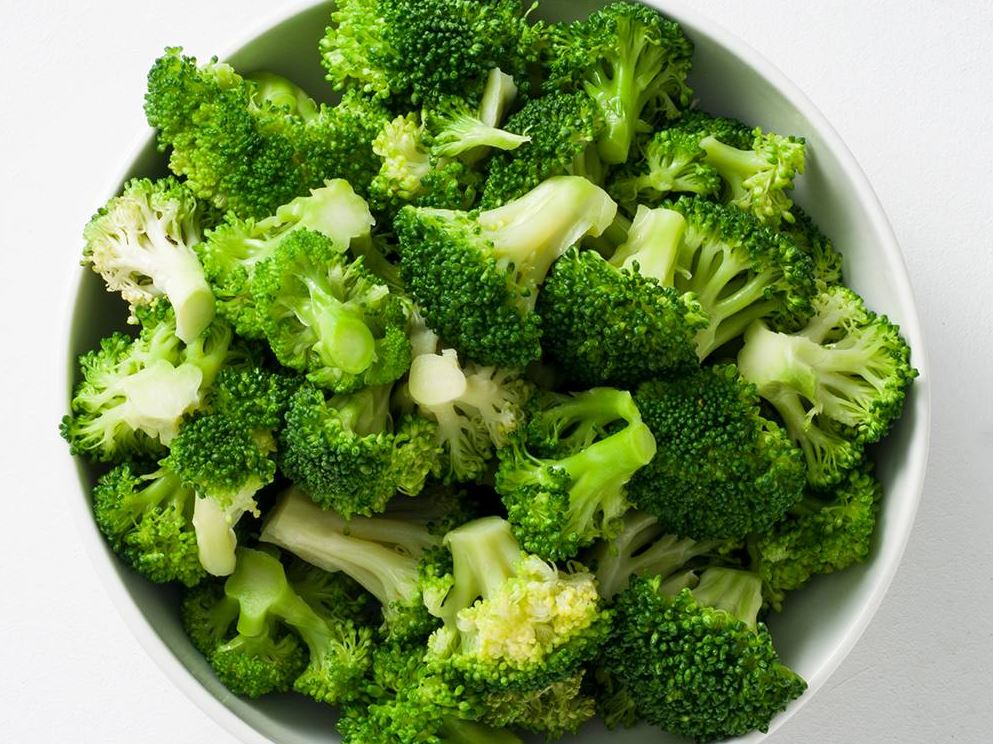
Maintains a Delightful Crunch and Vibrant Color: Blanching is the perfect technique to preserve the delightful crunch and vibrant, appealing green color of broccoli. Unlike other cooking methods that may lead to mushy or dull-colored veggies, blanching stops the cooking process abruptly, ensuring the broccoli remains firm and bright.
Dietary Benefits: This recipe is an excellent choice for almost any dietary requirement. It is naturally dairy-free, gluten-free, soy-free, and nut-free. Moreover, it’s vegan, making it suitable for plant-based diets, as well as paleo and Whole30 diets. This inclusivity makes it a universal side dish option for diverse dietary preferences and needs.
| Feature | Description |
|---|---|
| Quick and Easy Preparation | Only takes 10 minutes from start to finish, with brief cooking time suitable for busy schedules. |
| Versatile Use | Can be added to various dishes like omelets, stir-fries, and slow-cooked meals, maintaining integrity and enhancing meals. |
| Texture and Color | Blanching preserves broccoli’s crunch and vibrant green color, preventing it from becoming mushy or dull. |
| Dietary Benefits | Suitable for many diets including dairy-free, gluten-free, soy-free, nut-free, vegan, paleo, and Whole30. |
Recipe Ingredients
To prepare this nutritious and delicious side dish, you will need the following ingredients:
Broccoli: Fresh broccoli florets are the star of this recipe. Choose firm, dark green bunches with tightly closed buds and fresh-cut stems.
Salt: A sprinkle of salt enhances the natural flavors of the broccoli, making it even more palatable.
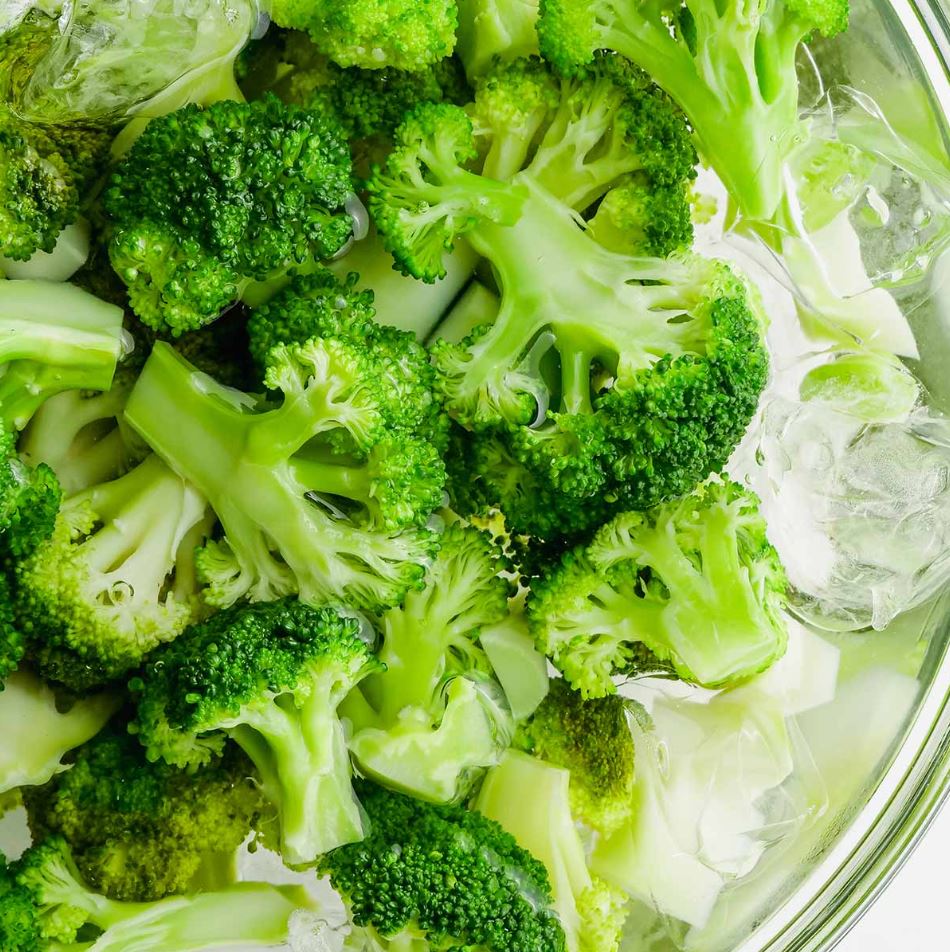
Red Pepper Flakes: For those who prefer a little heat, a dash of red pepper flakes can add a nice kick, complementing the broccoli’s natural flavor.
Steakhouse Ginger Dressing: This robust, flavorful dressing can turn blanched broccoli into a gourmet treat. Its tangy and slightly sweet profile pairs beautifully with the neutral taste of broccoli.
Tahini Dressing: For a creamy, sesame-flavored enhancement, tahini dressing offers a rich texture and nutty flavor that contrasts delightfully with the crispness of blanched broccoli.
These ingredients and optional additions allow for customization based on personal taste and dietary needs, making blanched broccoli a versatile dish that can be enjoyed in countless ways. Whether you’re looking for a simple, healthy side or a base for a more elaborate creation, this recipe provides a foundation that can be tailored to suit any meal.
| Ingredient/Option | Description |
|---|---|
| Broccoli | Fresh broccoli florets; choose firm, dark green bunches with tightly closed buds. |
| Salt | Enhances the natural flavors of the broccoli. |
| Red Pepper Flakes | Adds a little heat to complement the broccoli’s natural flavor. |
| Steakhouse Ginger Dressing | A tangy and slightly sweet dressing that transforms broccoli into a gourmet treat. |
| Tahini Dressing | Provides a creamy, sesame-flavored enhancement with a rich texture and nutty flavor. |
Recipe Substitutions
When it comes to cooking, flexibility can be just as important as flavor. This section provides alternative ingredient suggestions to accommodate various dietary needs and flavor preferences, as well as options for other cruciferous vegetables that can benefit from the blanching method.
Alternative Ingredients
For a Sodium-Free Option: Instead of salt, consider using a salt-free seasoning blend to enhance the broccoli without increasing sodium intake. This is especially useful for those managing blood pressure or following a heart-healthy diet.
For a Spicy Kick: If red pepper flakes aren’t your thing or you’re looking for something different, try a pinch of cayenne pepper or a few dashes of hot sauce to give the broccoli an extra zing.
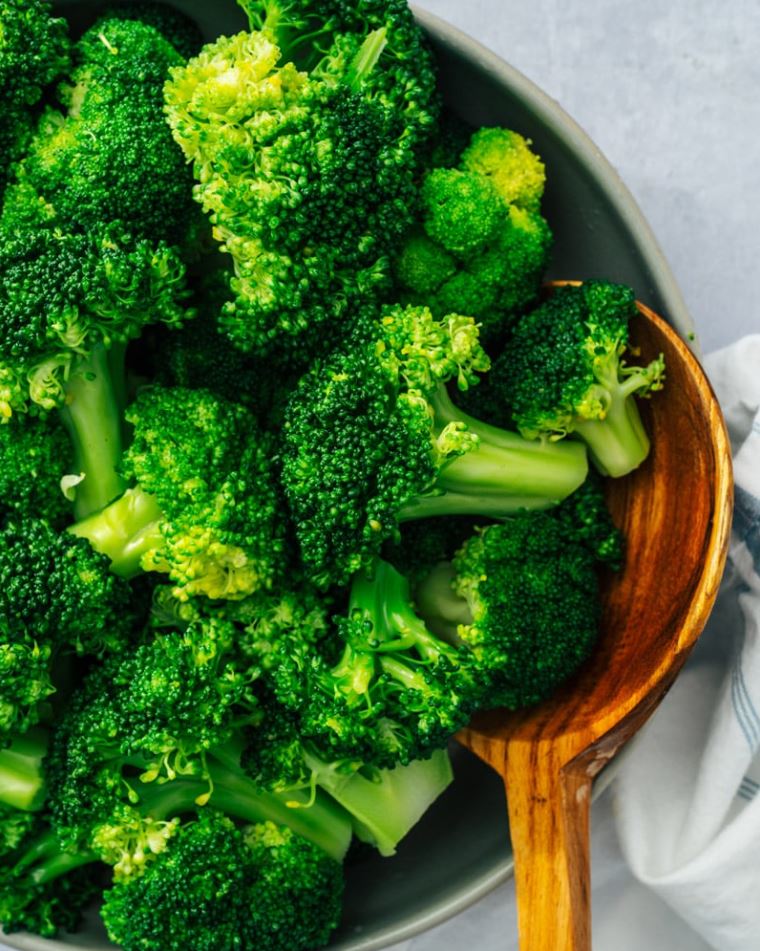
For a Sweet Touch: A drizzle of maple syrup or a sprinkle of brown sugar over the broccoli before serving can add a pleasant sweetness, balancing the spice if used with hotter ingredients.
For More Umami: A splash of tamari or coconut aminos can provide a deeper, richer flavor profile, suitable for those avoiding soy or gluten.
Alternative Cruciferous Vegetables
Blanching isn’t exclusive to broccoli; many cruciferous vegetables benefit from this cooking technique, which enhances their flavors and textures while maintaining nutritional value.
Cauliflower: Similar to broccoli in texture, cauliflower can be blanched using the same method to enhance its mild, slightly nutty flavor.
Brussels Sprouts: Halve them before blanching to ensure even cooking and a perfect bite.
Kale: For a softer texture in salads or as a side, a quick blanch can reduce bitterness and tough textures.
Cabbage: Blanched cabbage becomes tender and is excellent in both salads and stir-fries.
| Category | Options | Description |
|---|---|---|
| Alternative Ingredients | Sodium-Free Option | Use a salt-free seasoning blend to enhance flavor without increasing sodium intake. |
| Spicy Kick | Try cayenne pepper or hot sauce for an extra zing. | |
| Sweet Touch | Add maple syrup or brown sugar for a pleasant sweetness. | |
| More Umami | Add tamari or coconut aminos for a richer flavor, suitable for those avoiding soy or gluten. | |
| Alternative Cruciferous Vegetables | Cauliflower | Can be blanched to enhance its mild, slightly nutty flavor. |
| Brussels Sprouts | Halve before blanching for even cooking and a perfect bite. | |
| Kale | Blanch to reduce bitterness and soften texture in salads or as a side. | |
| Cabbage | Blanching makes cabbage tender, suitable for salads and stir-fries. |
Recipe Instructions
Blanching broccoli might seem straightforward, but a few key steps and tips ensure the perfect texture and flavor every time. Follow these step-by-step instructions to achieve blanched broccoli that’s both delicious and visually appealing.
Step-by-Step Instructions
Preparation: Start by washing the broccoli florets and trimming any leaves or large stems. Ensure all pieces are about the same size for even cooking.
Boiling Water: Bring a large pot of water to a rapid boil. Add a generous amount of salt to the water—it should taste as salty as seawater. This not only seasons the broccoli but also helps preserve its vibrant green color.
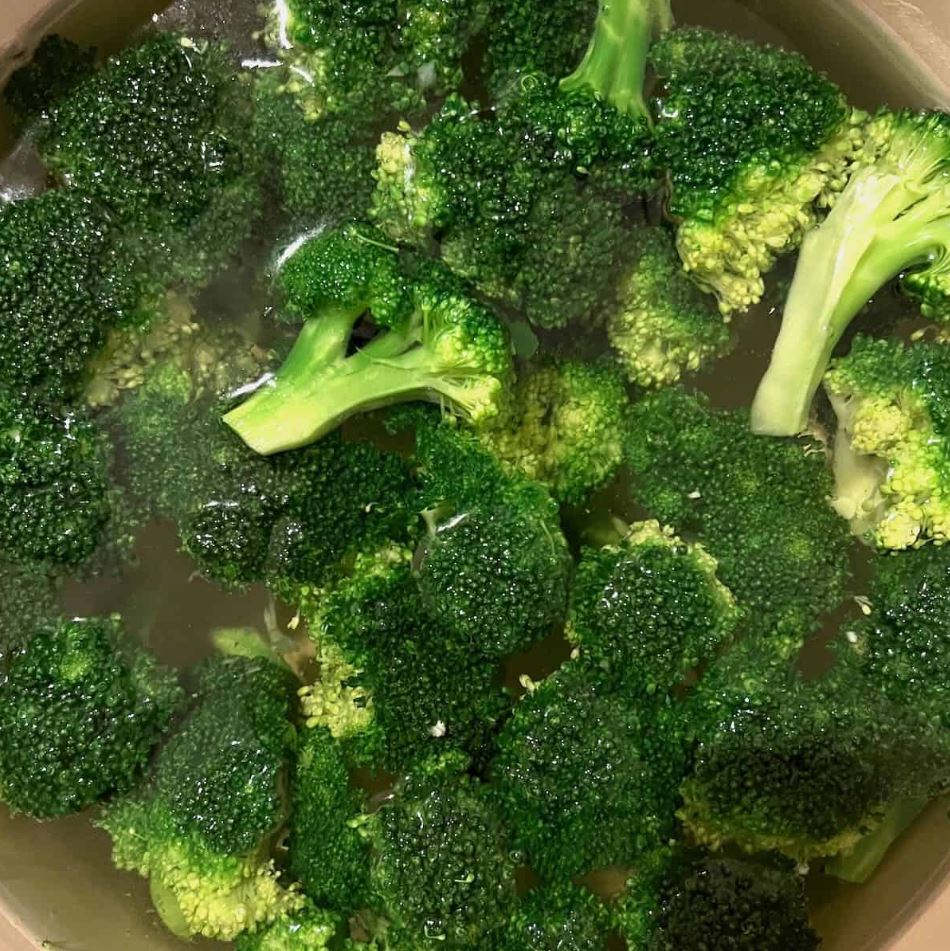
Blanching: Add the broccoli florets to the boiling water. Let them cook for about 1-2 minutes or until they are bright green and tender but still firm.
Ice Bath: While the broccoli cooks, prepare a large bowl of ice water. Once the broccoli is done, immediately transfer it from the boiling water to the ice bath. This stops the cooking process and fixes the bright color and crisp texture.
Draining: After a few minutes in the ice bath, drain the broccoli well. Excess water can dilute flavors and make the texture soggy.
Tips for Perfect Crunch and Flavor
Do Not Overcook: The key to perfect blanched broccoli is to watch the cooking time closely. Overcooking will lead to mushy, unappealing broccoli.
Refresh the Ice Bath as Needed: If blanching in batches, ensure the ice bath stays cold to stop the cooking process effectively.
Dry Thoroughly: Before adding dressings or seasonings, make sure the broccoli is thoroughly dried. This helps the flavors adhere better and keeps the dish vibrant.
Incorporating Dressings and Seasonings
Adding Dressings: Once the broccoli is dried, toss it with your chosen dressing while it’s still slightly warm. Warm broccoli absorbs flavors more effectively.
Seasoning: For a simple finish, sprinkle seasoned salt, black pepper, or grated cheese over the top. For more zest, add a squeeze of lemon juice or a sprinkle of lemon zest to enhance the fresh, green flavor.
By following these detailed instructions and tips, you can create a blanched broccoli dish that is not only healthy and quick to prepare but also packed with flavor and suitable for a variety of eating preferences. Whether served as a standalone side or as part of a larger dish, blanched broccoli is sure to impress.
| Phase | Step | Tips |
|---|---|---|
| Preparation | Wash and trim broccoli florets, ensuring all pieces are the same size for even cooking. | |
| Boiling Water | Bring a large pot of water to a rapid boil with salt that tastes as salty as seawater. | |
| Blanching | Add broccoli to boiling water and cook for 1-2 minutes until bright green and firm. | Do not overcook to avoid mushy broccoli. |
| Ice Bath | Immediately transfer broccoli from boiling water to a bowl of ice water to stop cooking. | Refresh the ice bath as needed if blanching in batches. |
| Draining | Drain broccoli well after a few minutes in the ice bath. | Dry thoroughly before adding dressings or seasonings. |
| Incorporating Dressings and Seasonings | Toss dried broccoli with dressing while warm. Season as desired. | Warm broccoli absorbs flavors more effectively. Add lemon for zest. |
Cooking Process FAQs
Blanching broccoli is a quick and efficient method to prepare this nutritious vegetable, but it can raise some questions, especially for those new to the technique. Here are some common FAQs along with tips for storing and reheating blanched broccoli.
Common Questions About Blanching Broccoli
How long should I blanch broccoli?
Blanch broccoli for about 1-2 minutes. The goal is to brighten the color and soften the texture slightly while retaining a crisp bite.
Can I blanch broccoli ahead of time?
Yes, you can blanch broccoli ahead of time. It’s a great way to prepare vegetables for quick meals throughout the week.
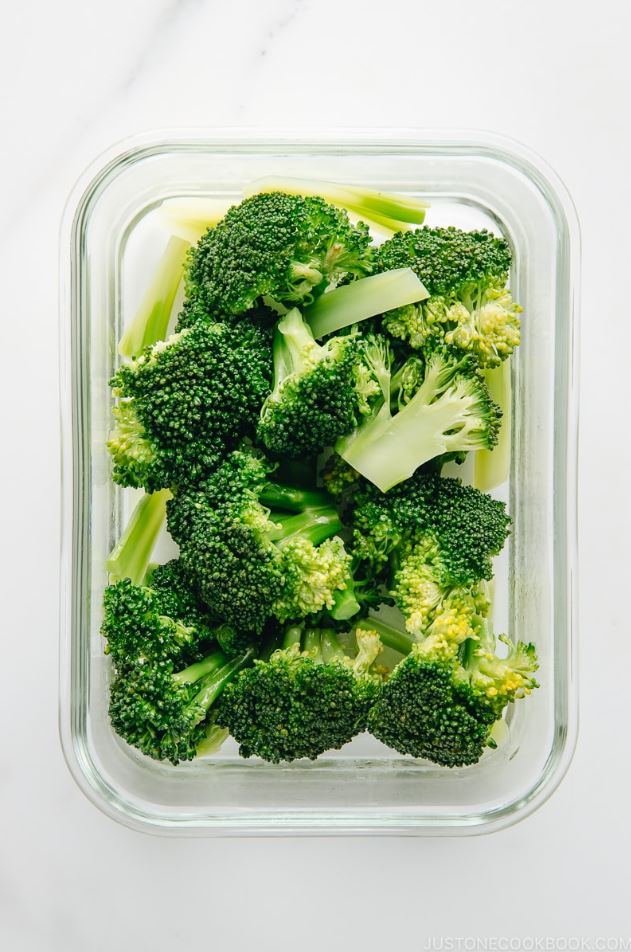
Should I salt the water for blanching?
Yes, salting the water is crucial as it boosts the flavor of the broccoli. The water should taste as salty as seawater.
How do I prevent my broccoli from becoming soggy?
To prevent soggy broccoli, make sure to immerse it in ice water immediately after blanching to stop the cooking process and then drain it thoroughly.
Can blanched broccoli be frozen?
Absolutely. Blanching is actually an ideal preparation step for freezing broccoli as it stops enzyme actions which can cause loss of flavor, color, and texture.
Tips for Storing and Reheating
Storing: After blanching and cooling, dry the broccoli thoroughly and store it in airtight containers or resealable bags in the refrigerator for up to 5 days.
Freezing: For longer storage, freeze blanched broccoli on a baking sheet before transferring to freezer bags. It can be kept frozen for up to 12 months.
Reheating: To reheat, steam or microwave the broccoli just until it’s heated through to maintain its texture. Avoid microwaving too long to prevent it from turning mushy.
| Topic | Question/Tip | Answer/Details |
|---|---|---|
| Blanching Time | How long should I blanch broccoli? | Blanch for about 1-2 minutes to brighten the color and soften the texture while retaining a crisp bite. |
| Advance Preparation | Can I blanch broccoli ahead of time? | Yes, it’s a great way to prepare vegetables for meals throughout the week. |
| Salt in Water | Should I salt the water for blanching? | Yes, salting the water enhances the broccoli’s flavor; it should taste as salty as seawater. |
| Preventing Sogginess | How do I prevent my broccoli from becoming soggy? | Immerse it in ice water immediately after blanching and drain thoroughly. |
| Freezing Blanching | Can blanched broccoli be frozen? | Yes, blanching is ideal for freezing broccoli as it preserves flavor, color, and texture. |
| Storing | Tips for storing | Store dried, cooled broccoli in airtight containers or bags in the refrigerator for up to 5 days. |
| Freezing | Tips for freezing | Freeze on a baking sheet before transferring to freezer bags; store for up to 12 months. |
| Reheating | Tips for reheating | Steam or microwave just until heated through; avoid over-microwaving to maintain texture. |
Cooking Tips
Blanching is a simple technique, yet mastering it can elevate the quality of your vegetable dishes significantly. Here are some best practices for blanching vegetables, along with advice on cooking times, water temperatures, and how to enhance flavors with sauces.
Best Practices for Blanching Vegetables
Uniform Pieces: Cut vegetables into uniform sizes to ensure even cooking.
Boiling Water: Use a large pot of water to allow the vegetables enough space to cook evenly and quickly.
Ice Bath: Prepare an ice bath before you start blanching. This is essential for shocking the vegetables to stop the cooking process immediately after blanching.
Advice on Cooking Times and Water Temperatures
Water Temperature: The water should be at a rolling boil before adding the vegetables.
Cooking Times: Each vegetable has a different ideal blanching time. For broccoli, 1-2 minutes is sufficient. For denser vegetables like carrots, 3-5 minutes might be necessary.
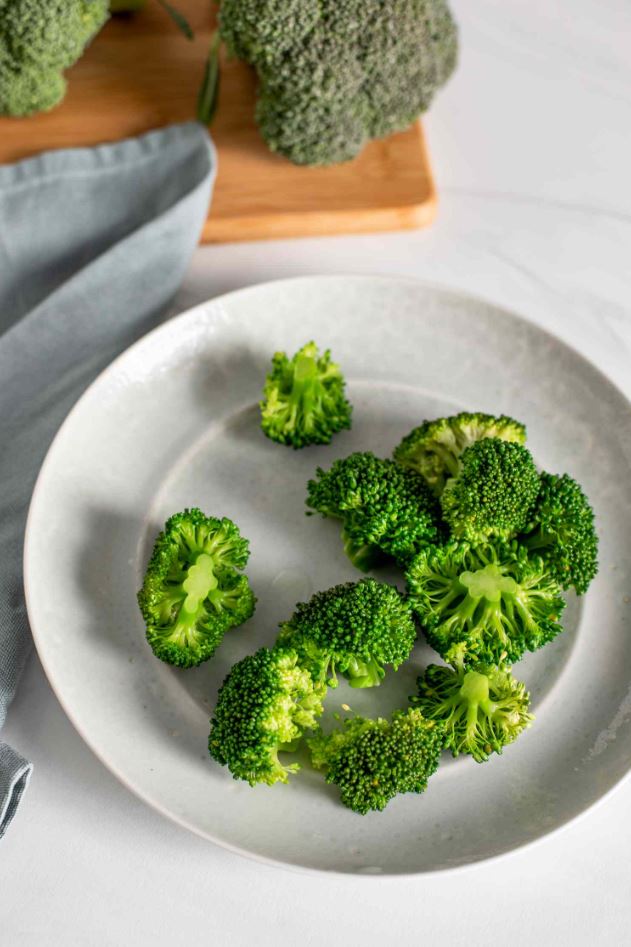
Spicing Up Vegetables with Sauces
Lemon Dill Aioli: This sauce pairs beautifully with blanched vegetables, offering a creamy texture with a bright, tangy flavor. Simply mix mayonnaise, lemon juice, fresh dill, and garlic for a quick and delicious aioli.
Tahini Dressing: For a nuttier flavor, tahini dressing made from tahini, lemon juice, garlic, and water can be drizzled over vegetables for an extra layer of taste.
Herb Vinaigrette: A simple vinaigrette made from olive oil, vinegar, chopped fresh herbs, salt, and pepper can elevate the natural flavors of any blanched vegetable.
By incorporating these tips and techniques into your cooking routine, you can ensure that your vegetables are not only cooked to perfection but are also enjoyable and full of flavor. Whether you’re preparing a simple side dish or a component of a larger meal, these guidelines will help you achieve delicious results every time.
| Category | Details | Suggestions |
|---|---|---|
| Best Practices for Blanching | Cut vegetables into uniform sizes, use a large pot of boiling water, prepare an ice bath. | Ensures even cooking and stops the cooking process quickly. |
| Advice on Cooking Times and Temperatures | Water should be at a rolling boil. Cooking times vary: broccoli 1-2 mins, carrots 3-5 mins. | Adjust time based on vegetable density. |
| Sauces for Vegetables | Lemon Dill Aioli, Tahini Dressing, Herb Vinaigrette. | Enhances flavors with combinations like creamy lemon, nutty tahini, or fresh herb profiles. |
Other Easy Side Dish Recipes
Expanding your culinary repertoire with a variety of side dishes can transform even the simplest meals into a feast of flavors and textures. Here are some easy and delicious side dish recipes that complement the versatility of blanched broccoli:
Roasted Bok Choy
Roasted Bok Choy is a delightful dish that brings out a sweet, nutty flavor from this Asian green. The edges of the leaves crisp up beautifully in the oven, providing a nice contrast to the tender stalks. Drizzle with a bit of soy sauce and sesame oil before roasting for an aromatic finish. Roasted Bok Choy Recipe
Instant Pot Zucchini
For a fuss-free vegetable side, try zucchini cooked in an Instant Pot. This method preserves the delicate flavor and texture of zucchini, making it a perfect complement to any meal. Add a sprinkle of herbs and a squeeze of lemon for a fresh, flavorful side. Instant Pot Zucchini Recipe
Lemon Garlic Asparagus
Lemon Garlic Asparagus is a vibrant side dish that combines the fresh flavors of spring. Quick to prepare, asparagus stalks are sautéed with garlic and finished with lemon zest and juice, creating a light and zesty side that pairs wonderfully with both meat and seafood dishes. Lemon Garlic Asparagus Recipe
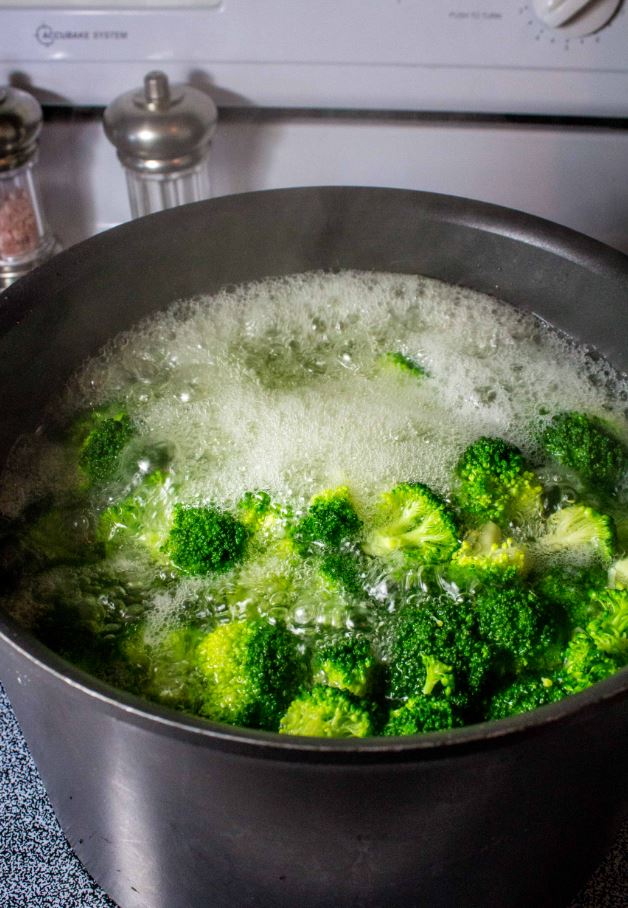
Arugula Pear Salad
This salad blends the peppery taste of arugula with the sweet juiciness of pears, topped with crumbled cheese and a balsamic vinaigrette. It’s a refreshing and elegant side that elevates any dining occasion. The contrast of flavors and textures makes this salad a memorable addition to your side dish selections. Arugula Pear Salad Recipe
Each of these recipes offers its own unique set of flavors and benefits, making them perfect candidates to rotate through your weekly meal planning. They’re designed to be simple, quick, and satisfying, fitting well into any busy lifestyle.
| Side Dish | Description | Key Ingredients |
|---|---|---|
| Roasted Bok Choy | Sweet, nutty flavor with crispy leaf edges and tender stalks. | Soy sauce, sesame oil. |
| Instant Pot Zucchini | Preserves the delicate flavor and texture of zucchini. | Herbs, lemon. |
| Lemon Garlic Asparagus | Light, zesty side, quick to prepare, pairs well with meat and seafood. | Garlic, lemon zest, lemon juice. |
| Arugula Pear Salad | Elegant and refreshing, blends peppery and sweet flavors. | Pears, crumbled cheese, balsamic vinaigrette. |
Blanching broccoli is more than just a cooking method; it’s a way to bring out the best in your vegetables, preserving their nutritional value, enhancing their natural flavors, and maintaining a delightful crunch. The versatility of blanched broccoli makes it an excellent addition to a variety of dishes, from simple weeknight dinners to more elaborate meals.
The benefits of blanching extend beyond broccoli, applicable to a wide range of vegetables, as illustrated by the diverse side dishes mentioned above. Each recipe showcases a different technique and flavor profile, encouraging you to explore the vast possibilities in the world of vegetables.
I encourage you to try blanching broccoli using the guidelines provided, and to delve into the other recipes linked here. These dishes are not only healthy and easy to prepare but also add color, texture, and flavor to your meals, ensuring that you never find vegetable sides boring again. Embrace the simplicity and efficiency of these cooking methods to enhance your culinary skills and enrich your dining experience.
Broccoli -The Best Way to Cook Frozen Broccoli for Maximum Taste
Quick and Easy Beef and Broccoli Lo Mein Recipe
Bang Bang Broccoli A Vegan Twist on a Classic Favorite
Easy One Pan Baked Chicken and Broccoli for Busy Weeknights
Delicious Asian Broccoli Slaw A Crunchy, Flavorful Side
Spicy Asian Broccoli Recipe A Sizzling Side Dish to Delight
Asian Broccoli Stir-Fry A Spicy Twist on a Healthy Classic
